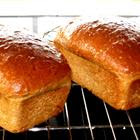A Home Generator:
- Is Expensive
- Requires a fair amount of maintenance
- Might be dangerous if not used properly
- Can be very noisy
- Can be a real blessing at times (during long power outages can provide well water, heat, lights and the microwave oven, TV and even the Internet)
Do Not Buy a Generator if:
- You have not stored food and water for all of your family members.
- You don't have at least $1000.00 or more to spend.
- You don't have a place to run it outside, or if you don't want to do the maintenance.
I Bought a Generator Because:
- We seem to lose power frequently.
- We have no neighbors to complain; the noise only bothers us. (I did install a quieter muffler)
- I could install it myself with the transfer panel.
- We felt we had the money for it; I do the maintenance myself.
If I Had to Do it Again, I would:
- Buy a better generator with a quieter muffler, maybe better voltage regulation.
- Run wiring from the outside of the house so the cable did not have to go under the garage door.
Different Types of Generators are:
- Small portable units: Typical use for camping--may be too small for home emergency use.
- Low cost units (with wheels): Light duty, 4000 to 7500 watts
- Heavy duty units (with or without wheels): More expensive, greater life.
- Permanently installed automatic operation units: Expensive, outside location.
Where would you buy a generator and the transfer switch panel?
- Home Depot or Lowe's
- Lots of other places (see web links)
A Generator Runs on:
- Gasoline: Expensive
- Propane: Nice if you have that available anyway
- Heating oil/diesel: Same as above
Types of Home Generators:
- Portable 5000 VA with wheels--use outside of the house
- Portable small units--use outside for camping
- Permanently installed--automatic operation 8000 VA or larger--normally located outside your house.
How to use a generator:
- Install a generator transfer switch panel connected to your house electrical circuit breaker panel.
- OR just plug in necessary equipment with extension cords.
- DO NOT back feed the generator. This is dangerous to you and possibly someone working on the power lines.
Here are some generator websites and how to use them:
- NE MARA: Church related amateur radio website, thanks to Dave Marling in Nova Scotia http://ne.mara.net/generator/gen.pdf
- POPULAR MECHANICS ARTICLE http://www.popularmechanics.com/how_to_central/home_clinic/1275631.html?page=1
- CENTRAL MAINE DIESEL SITE http://01856bc.netolhost.com/demo_units11.asp?page=1
- GENERATORJOE SITE is okay--lots of stuff there http://generatorjoe.net/store.asp
- HONDA GENERATORS http://hondapowerequipment.com/gen.asp
- KOHLER http://kohlerpowersystems.com/residential.html
- HOME DEPOT http://www.homedepot.com/
- GEN TRAN http://www.gen-tran.com/
Source: Jeff Porter, 28 April 2007
.jpg)





